Brave soul, who fears not death…
I’ve been playing through the Demon’s Souls remake again, and I realized that I’ve never written anything about the game on my blog. How is that possible? I think it’s time to amend this rather egregious oversight.
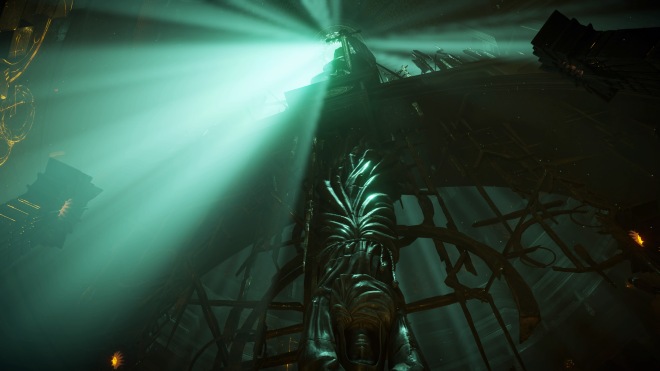
Demon’s Souls, of course, was the first entry in the Souls, and Souls-like series of games that FromSoftware would go on to create. I think it’s natural to expect that, as the years passed and these games became more advanced, that the signature “Souls” formula would become more refined, more streamlined. But Demon’s Souls differs from the others in the series in a few ways that I find especially endearing, even if some of the gameplay is dated – there’s a lot about Demon’s Souls that is simply unique to the title, that future Souls games either moved away from, or dropped entirely. I think the writing of this game, in a lot of ways, makes Demon’s Souls the most straightforward Souls tale – while having some obscure elements, this title is more tightly plotted than the others. But Demon’s Souls also has more than a few aspects to its narrative that make it a stand-out in the series; its focus on its NPCs to drive certain plot elements, and its distinct approach to boss fights make this title feel special within the Souls-like universe.
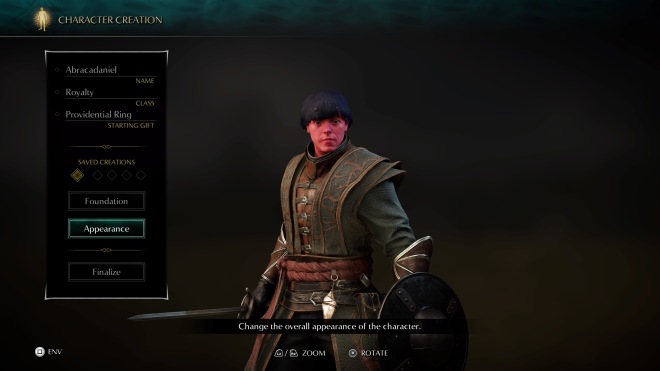
One of the things I appreciate the most about Demon’s Souls is the introspective nature of its story, and how it focuses on the consequences of the story line – even more so than the games that followed after. I think one of the most prevalent “complaints” I hear about Demon’s Souls is that “the bosses are too easy.” Which, first of all, you’re a bummer. You’re boring. And I don’t care. Because I love how well this game incorporates its bosses into the narrative. The Demon’s Souls bosses are all quite unique, in both appearance and mechanically, and for me personally, they’re real standouts in the Souls series overall.
A few of the bosses in Demon’s Souls share a commonality, in that, they were once human before they became a Demon themselves. My favourite of these particular bosses has always been Maiden Astraea. Astraea, the former Sixth Saint, and her knight, Garl Vinland, are waiting at the very bottom of the pit that makes up the fifth Archstone, the Valley of Defilement (which is exactly as lovely as it sounds). Astraea is particularly fascinating, because you can interpret her character in two completely different ways, and of course, the game isn’t going to confirm which one is “correct.” As the story goes, Astraea was so moved by her compassion for the residents of the Valley, who all struggle in the plague-infested rot of the swamps, that she became a Demon specifically to help these denizens. She eases their suffering, and in return, they bring her the Souls that she needs to consume to survive. She is still a Demon, after all. It’s easy to buy this version of events, when you see how utterly miserable the Valley is; used as a dumping ground by the cities above, the swamp is poisonous, the people are mad, and Astraea lives in a literal cesspit of polluted blood and water, sitting on a pile of corpses and surrounded by dead children and fetuses (yes, the plague babies are disgusting and also quite sad). Of course she was moved by their plight, enough to sacrifice her own soul to help. Killing her feels wrong – when you finally confront her (assuming you’ve dispatched Garl first) she actually kills herself before you get the chance. “Take your precious Demon soul” she says in disgust before she perishes. Which is… pretty depressing.
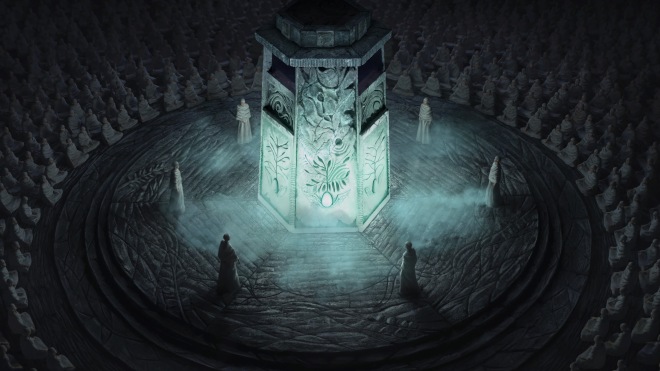
OR IS IT? According to the Filthy Woman merchant, the “witch” Astraea has made the Valley worse, and “turned everything foul.” Though, she also complains that she was “the apple of every man’s eye” before Astraea arrived, so she might just be disgruntled at her prospects of winning the Valley of Defilement’s Next Top Model. She might be right though. Astraea seemed to have been at odds with her Faith (and God) before arriving in the Valley, and despite technically easing the pain of the residents, she doesn’t actually help them in any way. What better way to turn her back on her waning faith than to become a Demon, and something of a God figure herself? She doesn’t even have to find her own Souls to feed on, as her increasingly violent worshippers handle that for her. They’re eager to receive her favour, and I’m sure would be happy to turn on each other to earn it. And so, there she sits on her throne of squalor, feeding on the people who struggle in the Valley, protected by her loyal knight. According to the Death Cloud spell, Astraea “willingly accepted the corrupted and corroded” and “naturally became the most corrupted of them all.” So maybe her initial intentions came from a place of empathy, but as the saying goes, the road to hell is paved with good intentions. So Astraea became the most impure Demon of all (though “her works are equal to those of divine beings,” which is perhaps what she wanted all along) but I still feel conflicted about killing her. Regardless, as with a lot of story elements of Demon’s Souls, she lives in my head rent-free.
This level of nuance isn’t unique to Demon’s Souls, but I do find the brand of storytelling in this particular title to have a different vibe than the rest of the Souls series. It’s a thread that continues through a lot of narrative elements in the game, one of my favourite being the presentation of the conflict between the two types of soul magics – the kind based upon Faith, and the kind based upon Intelligence. While all the Souls games have these two variations of magic (that dictate what type of spells/miracles your character is able to use) only Demon’s Souls focuses in on the difference between the two as a source of strife. Saint Urbain represents the Faith-based side, while Sage Freke represents the Intelligence-based brand. The Witch Yuria’s magic is also based on the Intelligence stat, but her magic is considered different – according to Freke, her magic is “weaker” because it’s based on “emotions.” There is absolutely zero evidence to suggest that is the case, which means Freke is a) a sexist clown, b) not as intelligent as he thinks, and c) is prone to capping. Do with that information what you will. Yuria will tell you that her magic is darker, because she merely channels the energy of these Demon’s souls, whereas Freke manipulates their core essence. “Freke’s power comes from human potential, while mine is a dark, dependent art.” But enough about these two – I’m more interested in the division between Saint Urbain, and Sage Freke, and the friction between the two schools of magic.
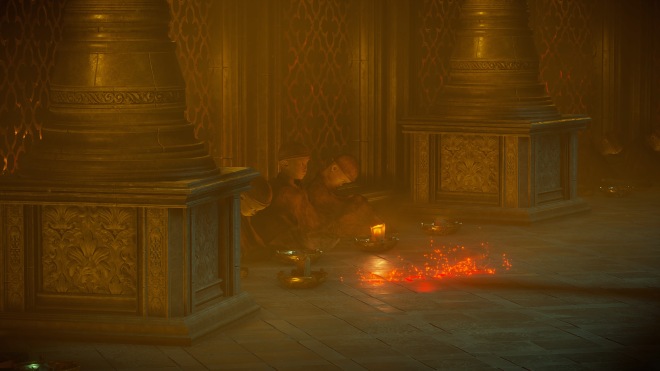
You’ll rescue Saint Urbain from the Shrine of Storms Archstone, and when he returns to the Nexus, he’ll offer you Faith-based miracles created from your inventory of boss souls. According to Saint Urbain, “God has granted this accursed land with special power; it is God’s way of telling us we must stand up to the Demons.” In order to use these miracles, you’ll need to equip a talisman, which is fashioned in the image of this God. While Saint Urbain doesn’t get into the specifics of how his miracles work, he does insist that a “Demon’s soul is a source of evil power” and he will “cleanse them” in order for you to perform miracles with their power. But the most interesting dialogue for me comes from Urbain’s disciple: “A miracle is a heavenly act, but spells are the acts of Demons, the work of soul arts. They have similar effects, yet, one is clearly evil, and the other is clearly good. Magicians, in the end, are mere servants of the Demons.” So one is clearly good, and the other is clearly evil, huh? Hmm. But it’s important to note, of course, that both these magics started at the same time (with the appearance of the Demons), are drawn from the same source (souls), and in the disciple’s own words, have similar effects. So it seems the only actual difference might be in the school of thought surrounding each type of casting.
And here’s where the real kicker comes in – in the form of the Talisman of Beasts. You can get this Talisman by either defeating Scirvir’s black phantom in Stonefang Tunnel, or from Mephistopheles as a reward for killing a certain NPC in her questline. The description on the Talisman reads: “An old wooden amulet featuring a symbolic depiction of the Old One. Can be used to cast both miracles, and magic. What was considered a depiction of God was in fact an image of the Old One, portrayed as a force of feral chaos.” Not only does this talisman work for casting BOTH types of magic, the “God” that Saint Urbain and his disciples worship is simply a Demon – the original Demon, the source of all other Demons. And is, in fact, the same Demon from which the power of the soul arts springs from. So how about that? When I first played Demon’s Souls and learned this, my mind was thoroughly blown. Timbers were shivered. So these two schools of magic are effectively one and the same, and the only difference is the rhetoric surrounding them. It’s just so human for these characters to decide one is good, and one is evil, and to build their own narratives around the use of each. Sage Freke seems to have been aware of this all along, but he still looks down on Yuria’s magic using a similar line of thought. And despite all of his knowledge, and knowing what allowing the Demons to remain in this world means, he will still ask you to betray the Maiden in Black in the end. Lulling the Old One back to slumber means no more souls to manipulate – no more magic, no more soul arts. For anyone. So killing the candle maiden, and allowing the Demons to thrive? “That, dear friend, is the righteous path.” Freke seems content to allow humanity to be eradicated to satiate his thirst for “knowledge from beyond.” The use of the soul arts ultimately depends on the presence of the Demons, and Freke encourages you to embrace that path.
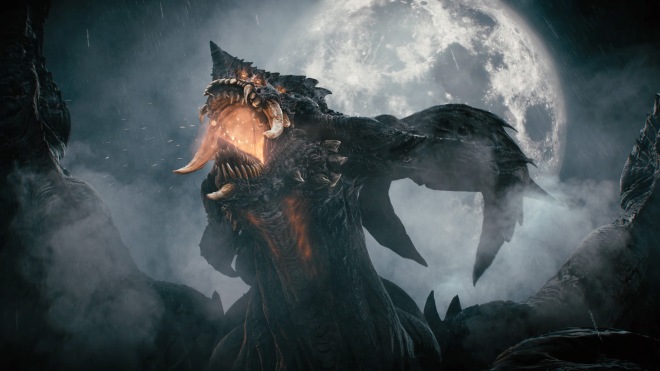
There’s no debating that choosing to serve the Old One, and allowing the Demons to take over, means the end of humanity. But is this objectively bad? Not according to the man of the hour, the one who roused the Old One from its slumber, King Allant. It’s interesting when you find out what the “true” King Allant has become – a weird, sad, sludge monster flailing around in the roots of the Old One. I’m not quite sure that was his plan all along, but I hope he’s content. Regardless, when you do finally face him, he has some interesting justifications for what he’s done:
“Surely you have seen for yourself… the pain and suffering that fills this world! But fight poison with poison. God is merciful, and so, created the Old One. The Old One will feed upon our souls, and put an end to our tragic realm of existence!”
Old King Allant
King Allant certainly isn’t the first “villain” to claim that humanity is a scourge upon the world, and should be exterminated. But I always found his reasoning to be kind of interesting – when you put Allant out of his misery, he says, “You fool. Don’t you understand? No one wishes to go on…” So it seems that, rather than a thirst for power which sees him sitting on a throne atop the world, somehow having conquered or bested the Demons, he simply wishes to see humanity erased out of a sense of nihilism. He believes that humans are apathetic to living anyway, so why bother trying to preserve their existence? Won’t the human race come to this eventual end anyway? Why not sacrifice everyone to the Demons and end the suffering, the pain, the hardship? It’s an interesting quandary. If you choose to betray the Candle Maiden, and the Monumental, and serve the Old One, what would your reasoning be? Do you seek knowledge and preservation of the soul arts, like Sage Freke? Do you wish to put an end to the suffering of humanity? If you choose this path, you make the choice for everyone – it’s your burden to bear.
I feel like a part of being human is being invested in the preservation of the human race – despite how much I hate people and some of the things that we do. I’ve always had a hard time choosing the “bad” ending in Demon’s Souls – and the choice is much more clear cut in this game compared to other Souls titles. While the other games have vague enough endings, in which it’s not entirely clear how your choice will pan out, for good or bad, Demon’s Souls is (in a way) more straightforward. I appreciate the ambiguity they went with in the future titles, in having endings with no clear “right” answer, but I also appreciate Demon’s Souls for being unique in its storytelling.
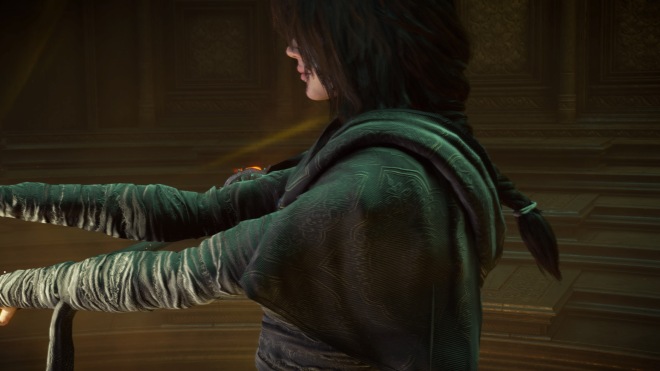
It frustrates me when I see people focusing on “the bosses in Demon’s Souls are so easy” as some sort of ‘gotcha’ criticism of the title – it’s also much easier to go back to Demon’s Souls after playing the other games in FromSoft’s lineup, given the more challenging trajectory the series took. It’s all fun and easy until you’re getting slapped around by Flamelurker in the depths of Stonefang Tunnel. But anyway, the unique presentation of bosses in Demon’s Souls is one of my personal favourite elements of the game, and I love the way they’re incorporated into the narrative. Maiden Astraea, the Old Hero, and the Old Monk are some highlights for me – and in a lot of ways, they paved the way for future Dark Souls bosses, and concepts that FromSoft would use in these coming titles.
There’s a lot to love in Demon’s Souls, from its unique characters, like the Monumental, to the way its story manages to incorporate so much nuance using its NPCs and their belief systems. Sure, certain mechanics of Demon’s Souls haven’t aged especially well, and it’s a bit harder to go back to if you’re comparing it to the newer Souls titles. Imagine having no way of rolling or running through that Miyazaki signature poison swamp? Barbarism. Despite it all though, Demon’s Souls really does have a special place in my heart, and I do think its narrative might be my favourite of all the Souls titles, which is really saying something. As much as the Souls series has impacted my gaming life, none of these stories have struck quite the same chord as Demon’s Souls. So I’ll put my FromSoft soapbox away for another month, but not before I take care of the two most important things in Demon’s Souls – that is, murdering Patches in the Nexus (yes, Patches is still Patches in the OG Souls game, and must be dealt with as such), and lulling the Old One back to slumber.


Another fan of Maiden Astraea! She’s my favorite boss From has ever made. Demon’s Souls is one of my all-time favorites, and I agree that its unique qualities deserve recognition.
LikeLiked by 1 person
YASSSS, another Astraea fan!! I’m in exactly the same boat, she’s one of my favourite bosses of all time. All the unique bosses are still a highlight of Demon’s Souls for me, and I wish people wouldn’t whine about how easy they are while ignoring the fact that they’re awesome LOL.
LikeLiked by 1 person